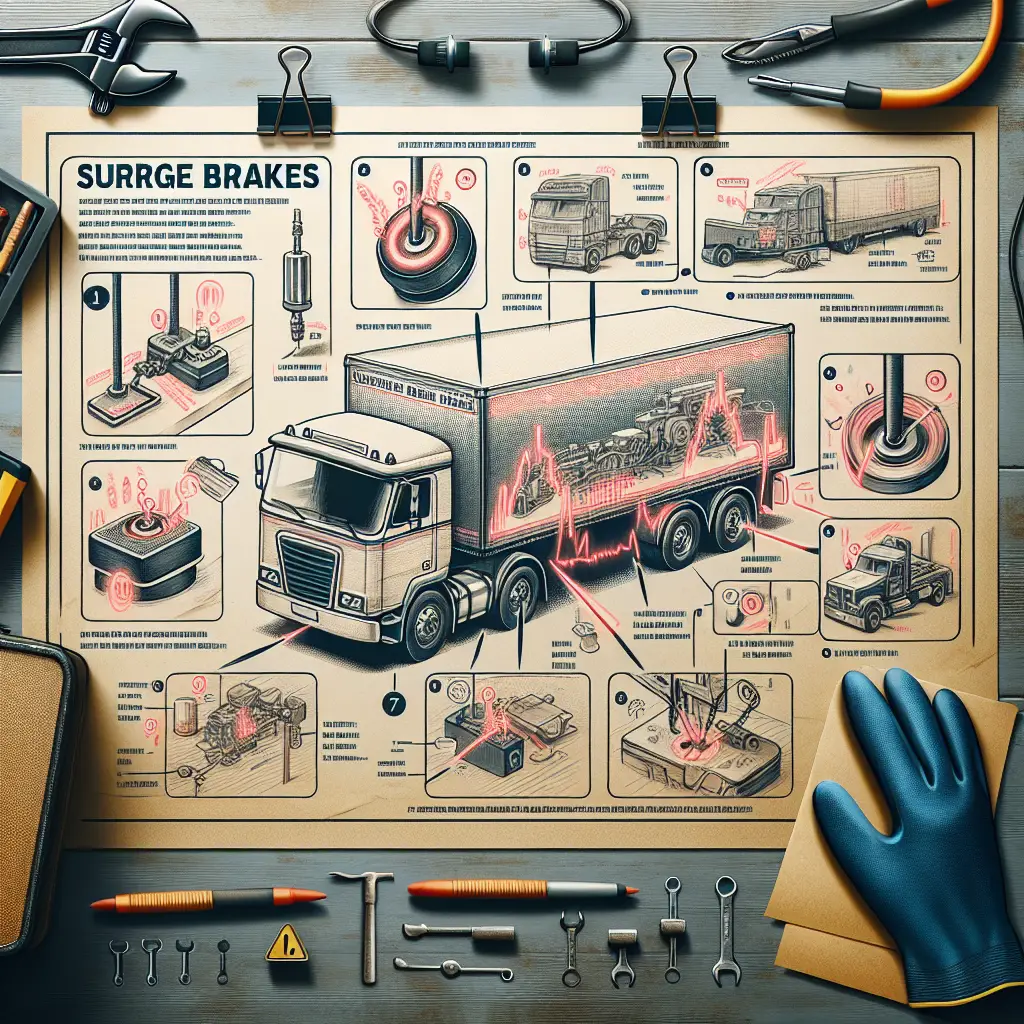Title: How to Test Surge Brakes for a Safe Towing Experience
Introduction:
Towing a trailer can be demanding and, at times, risky, especially if your surge brake system isn’t functioning correctly. Surge brakes are essential for maintaining control and safety on the road. In this guide, we’ll walk you through the process of testing surge brakes to ensure your towing adventures are as safe as they are fun.
What are Surge Brakes?
Surge brakes, also known as hydraulic brakes, are a type of braking system commonly used on boat trailers and other types of recreational trailers. Unlike electric brakes, surge brakes are activated by the force generated when your towing vehicle decelerates. This pressure applies the brakes on the trailer, allowing for a synced slowing or stopping action.
Why is Testing Surge Brakes Important?
Ensuring your surge brakes are in working order is crucial for towing safety. Faulty brakes can lead to decreased control over your trailer, resulting in potential harm to yourself, your cargo, or other motorists. Regular testing will help you catch any issues before they escalate into more significant problems.
Step-by-Step Guide to Test Surge Brakes
Before Testing:
1. Inspect the hydraulic fluid level in the master cylinder reservoir, topping it off if needed with an appropriate fluid as recommended by the manufacturer ([link to credible source]https://www.trailerlife.com/tech/diy/maintaining-trailer-brakes/)
2. Check for signs of wear, leaks, or damage to the brake lines, as well as the condition of the brake pads and drums or discs if accessible.
Testing the Surge Brake System:
1. Prep the Tow Vehicle and Trailer – Ensure both the towing vehicle and trailer are on a flat, even surface and that the trailer is securely hitched to the tow vehicle.
- Engage the Brake System Manually – If your surge brake system includes a manual lockout, engage it. This will allow you to simulate braking pressure without moving the vehicle.
-
Check for Movement in the Actuator – Have an assistant apply pressure to the trailer tongue, simulating a deceleration while you observe the movement of the actuator. It should move smoothly without any sticking or excessive free play.
-
Listen for Noise – An important part of the testing process is listening. Squealing or grinding noises can indicate that there is a problem with the brakes that needs immediate attention ([link to credible source]https://www.etrailer.com/faq-testing-trailer-brake-magnets-for-proper-function.aspx).
-
Perform a Roll Test – Carefully move the vehicle forward slowly and apply the brakes. If the system is working correctly, you should feel the trailer smoothly decelerate with your towing vehicle.
-
Check Brake Line Pressure – Using a pressure gauge, check the brake line for pressure when the tow vehicle’s brakes are applied. The pressure should increase as more braking force is applied.
Troubleshooting Common Issues:
- No Resistance When Applying Brakes – This may indicate a loss of hydraulic fluid or air within the system. Check for any leaks and make sure to bleed the hydraulic lines if air is suspected.
-
Brakes Locking Up – This often means there’s too much fluid pressure within the system. Ensure that the master cylinder is not overfilled and that the actuator is properly adjusted.
-
Uneven Braking – This could be a result of uneven wear on the brakes or an issue with the brake lines. Inspect both sides of the trailer’s brakes to make sure they are wearing evenly and that there are no obstructions in the lines.
Maintenance Tips:
Regular maintenance is essential to keep surge brakes functioning properly. Here are a few tips to keep you rolling safely:
- Replace brake fluid every two years to prevent moisture build-up which can cause brake failure ([link to credible source]https://www.boatus.com/magazine/trailering/2016/october/maintaining-trailer-brakes.asp).
- Inspect brakes before and after each trip, looking for any signs of wear or damage.
- Keep the brake components clean from road grime and salt, especially after traveling in wet or winter conditions.
Conclusion:
Testing your surge brakes regularly is a key component of towing safety. With the correct tools and a bit of know-how, you can ensure that your towing excursions are smooth and secure. Always follow the manufacturer’s recommendations for maintenance and care, and when in doubt, don’t hesitate to consult a professional. Safe towing!
Remember to consult your trailer’s owner manual for specific instructions relating to your model, and never neglect routine brake testing and maintenance. It’s not just about safeguarding your journey; it’s about ensuring the safety of all who share the road.

